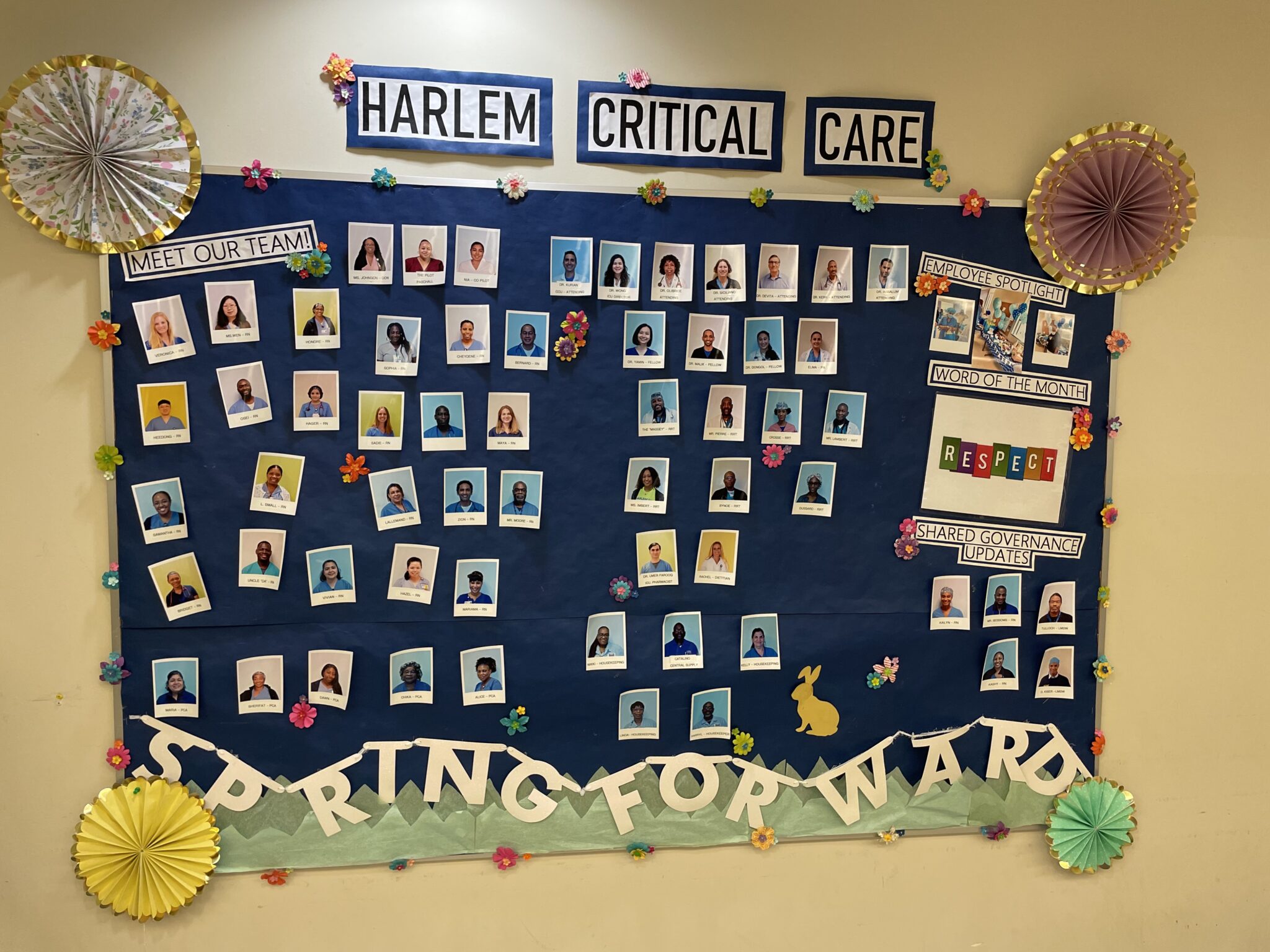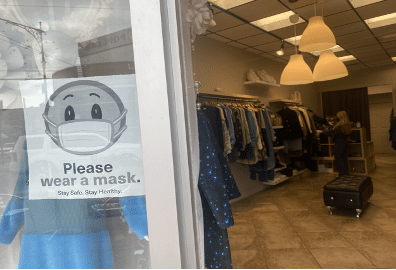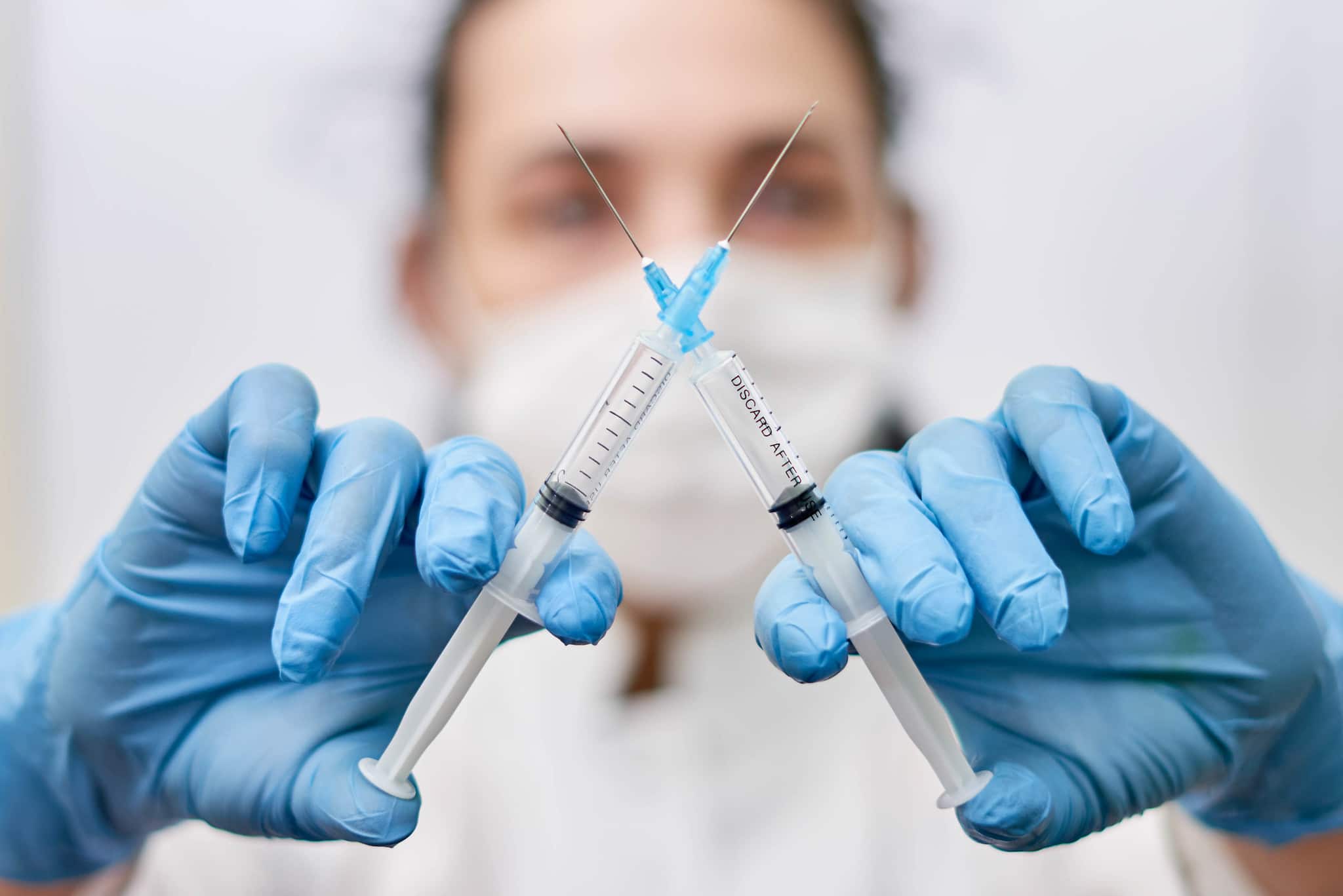The Harlem Hospital ICU staff are all breathing a little easier than they were in spring 2020 at the height of the pandemic. Photo taken by Nia Rodriguez.
I was a clerk at Harlem Hospital last March when the coronavirus swept through and caught everyone by surprise. I have seen a big change in a year. Last year nurses and doctors scrambled to attend to every patient. Each room in the ICU had filled up overnight, and the staff seemed overwhelmed. No one was quite sure how to treat patients due to a lack of formal education on the virus.
One nurse had five to six patients. Staff might spend an hour with one patient. Nurses ran from room to room. Sometimes they never got a chance to sit. Staffers, nurses, doctors, residents, administrative people and janitorial workers even began to contract the virus.
New York City was the epicenter of the worldwide pandemic. Traveling nurses, respiratory professionals and others from all around the country came to the rescue so that Harlem Hospital could continue to treat patients.
The patients were scared and lonely. Some were losing their lives. Nurses and doctors could not go into patients’ rooms as frequently as they did before the pandemic. The hospital did not have enough personal protective equipment. The staff was scared of contracting the virus and tried to avoid contact with sick patients.
“Last year there was a lack of education, and everyone was afraid to get the disease themselves as well as bring it to their families,” said respiratory therapist Sam Lambart.
Visitors were not allowed into the hospital. Most people passed away without saying their final words to family members. They could not get that last piece of comfort.
Family members called every day. I talked to them. I heard frustration, anger, anxiousness, worry and sadness in their voices.
This March things seemed to get better. Doctors, nurses, medical personnel—all of us—have a better understanding of how to deal with COVID-19.
Nurse Doris Oyogo explained the difference. “There is more information and supplies, and professionals are less afraid of contracting the virus.” She also said the decrease in the number of patients made a big difference. “The numbers of patients last year were overwhelming. This year it is not a continuous number of patients but more of a surge. Nurses are able to manage the incoming admissions.”
The hospital has been able to keep patients who have COVID-19 away from patients who need regular treatment. We no longer turn away patients and send them to other hospitals. We had to do that last year because there were not enough beds. But things are better now.
This New York Times site tracks and updates virus numbers regularly. Under their “state of the virus” heading, the site reported on April 19, 2021, “Around 67,000 new infections are being identified each day, down from about 250,000 daily at the January peak.”
New York Governor Andrew Cuomo said that as of April 16, 2021, more than 40 percent of New Yorkers have received at least one dose of the COVID-19 vaccine. He wants to ensure everyone is receiving their vaccine as quickly and fairly as possible. At Harlem Hospital we can see a light at the end of the dark tunnel we have been walking through since the pandemic began.
Tags: City College Journalism Coronavirus COVID-19 COVID-19 DIARIES Cuny Harlem Harlem Hospital ICU Health Care Workers Nia Rodriguez The City College of New York
Series: COVID-19 DIARIES






